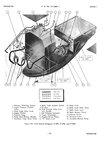Navalwarrior
Staff Sergeant
- 764
- Jun 17, 2018
Resp:At the start of the war, the Japanese used unprotected fuel tanks and were noted for burning easily, not a configuration one would like to fight with.
In early '43, the F4U would be the -1 version without water injection and the P-51 would be the baseline version with the -39 engine. The P-51A with the -81 engine, which was coming out at this time was a great performer even in the ETO where it was equal to or was out performing most Allied and Axis fighters up to 15K, maybe a bit higher. The data I have, mostly from Spitfireperformance shows the P-51A outperforming the F4U-1, often significantly, in both airspeed and climb up to about 23k ft, where the F4U-1 catches up. Unfortunately, the P-51A performance at these altitudes, was NOT deemed acceptable for combating the latest German fighters as power was dropping off quickly, AND, since the the F4U-1 had less than or similar performance of the P-51A, and, power was also dropping off quickly at altitude, neither would be acceptable as a high altitude bomber escort. Why would the AAF select a completely different aircraft when a better performing P-51A was coming off the assembly line, and the clearly superior P-51B was being built and was in flight test. In August, 1943, the water injected F4U-1(A) became operational and was a significant improvement over the F4U-1, mission operations began later in October. However, on December 1, 1943, about a month later, the P-51B flew its first sweep over France. It is apparent that the F4U would not have provided an acceptable bomber escort before the P-51B Mustang became available.
Likely true. However, one drop tank on the P-47 was insufficient. The first production variant with wing hard points for two additional drop tanks was the P-47D-15, which arrived about 4 mos later than the arrival of of the P-51B. And when they did arrive, their numbers were few. What I mean to say is the arrival of the Merlin Mustang did not immediately solve the escort issue plaguing 8th AF. It was a beginning.

